A quick and easy-to-make Vietnamese sour soup (canh chua) made from scratch, with a perfectly balanced sweet and sour soup, made with tamarind, aromatic herbs, and your choice of protein (fish or chicken)
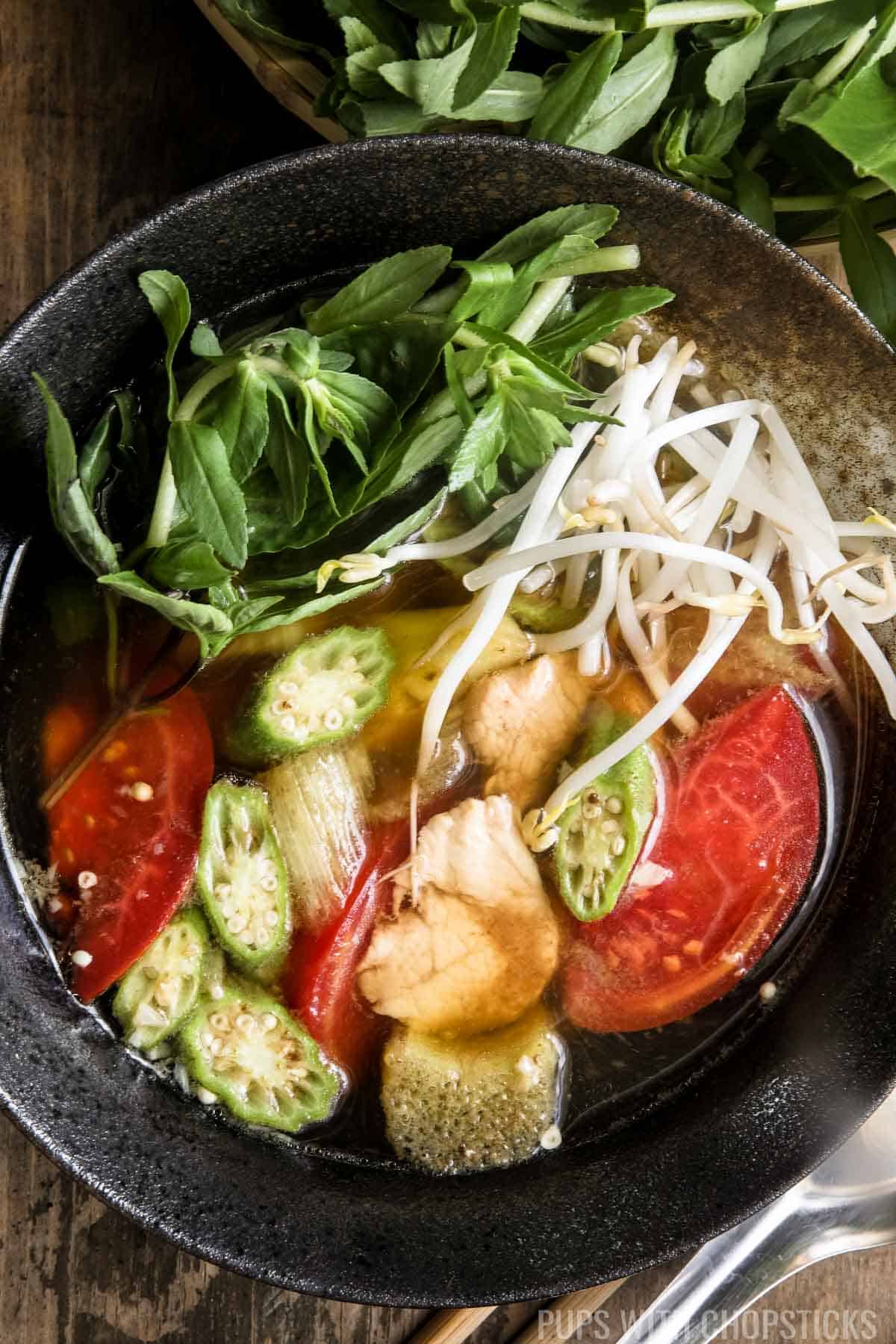
Table of Contents
When it comes to comfort foods, Vietnamese cuisine definitely has no shortages of warm and cozy soups and stews. From Canh Chua, to bun bo hue (Spicy Vietnamese Beef Noodle Soup), to Bo Kho (Vietnamese Beef Stew) there's always something to keep you warm and cozy during the fall and winter seasons.
What is Canh Chua?
Similar to Thailand's tom yum hot and sour soup, Canh chua is Vietnam's version of sour soup which originates from Southern Vietnam from the Mekong Delta region.
It is mainly flavored with tamarind which gives this soup it's signature sour and tart flavor. It is balanced out with a bit of sugar which gives it more of a sweet and sour soup flavor compared to sinigang (from the Philippines) which is more of a sour soup made from tamarind.
Traditionally, the soup is cooked with a lot of vegetables as well like elephant ear (taro stems), okra, pineapple, and tomatoes.
Canh chua can be made with different types of proteins as well, it is most commonly made with fish (canh chua cá), but it is can also be made with chicken (canh chua gà) or shrimp (canh chua tôm) as well!
For this recipe, I use chicken instead of the more commonly used fish because I personally find that it is easier to work with, easier to find and it's what I always have on hand so I can make a batch quickly anytime I am craving this comforting Vietnamese soup. Feel free to substitute this with fish as well.
Canh Chua Ingredients
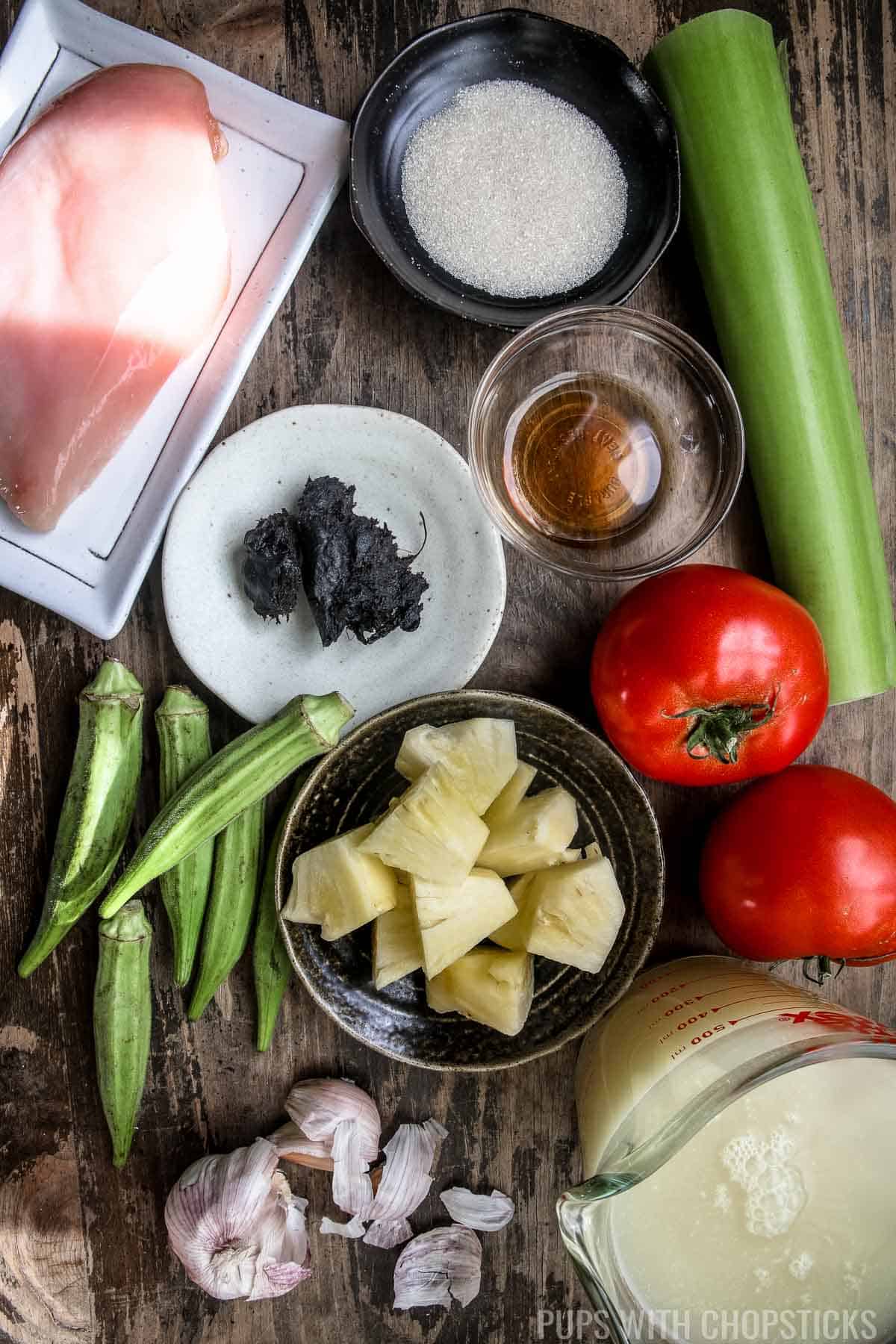
- Tamarind Paste - Tamarind is a must for this soup. It is the main flavor and it provides tanginess for it. I don't recommend substituting it with lemon or lime juice because you will miss out on the fruity flavor of the tamarind which is what makes this soup delicious. I use tamarind paste and concentrate interchangeably, but I usually prefer to use the concentrate because of its ease of use. For more details about the difference between the paste and the concentrate, read the section below.
- Broth - Any type of broth works for this soup. I like to use chicken stock because it's what I always have on hand but you can also use vegetable broth or seafood broth as well.
- Pineapple - adding pineapple is a must in this soup. I love using fresh pineapple because I find them a lot juicier and flavorful, but it does take a lot more work to peel and core it. In a pinch, you can also use canned pineapples as well, try to buy the pineapple rings so that you can cut them into larger 1-inch pieces. You can also add the pineapple juice from the can directly into the broth for some more flavor.
- Vegetables - I like to add okra and tomatoes to this soup but you can play around with adding all kinds of vegetables to this soup. I occasionally will also add red or green peppers as well, which I find add delicious flavor to the soup.
- Chicken - For this recipe, I like to use chicken because it's easier to find. That being said, you definitely can use the traditional protein of fish (catfish, salmon, basa, or grouper) or shrimp!
- Sugar & Fish Sauce - I use fish sauce and sugar to balance out the sour flavor of the tamarind.
- Elephant Ears (Taro Stems) - This vegetable is very porous and spongy and makes a great addition to the soup because of how well it absorbs it. Each bite of elephant ears is a burst of soup flavor. If you cannot find this, you can omit it. It is more of a carrier of soup and does not add much flavor to it.
- Garlic - Definitely do not omit garlic for this soup. It adds a lot of flavor to it. You can finely chop it and add it to the soup, or if you're lazy like me, you can keep it whole (but smash it with the side of the knife to release the flavor) and add it in whole - just make sure you fish it out before you serve the soup.
Fresh Herbs
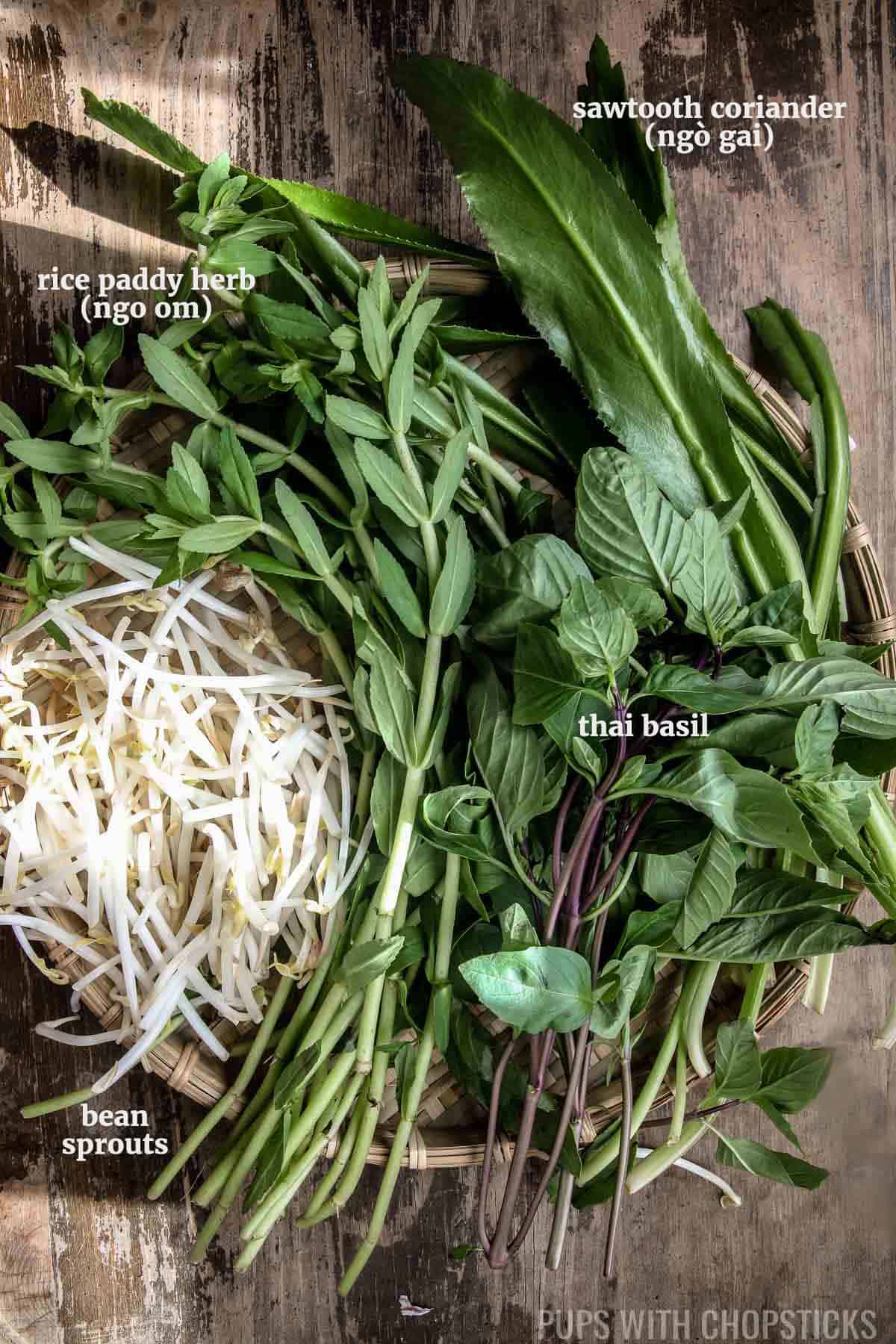
- Thai Basil - Adding Thai basil to any type of soup adds a burst of flavor and brightness. Add it directly into your bowl right before you eat it like you do when you eat pho or bun bo hue. If you can't find it, you can substitute it with Italian basil but I highly recommend using the Thai version because it is a lot stronger and has a lot more flavor.
- Rice Paddy Herb (ngo om) - this Vietnamese herb has a bright and fresh flavor with hints of citrus and cumin. If you cannot find this herb, you can skip it. There is no true substitute for this herb.
- Sawtooth Cilantro (ngò gai)- this gives the soup a sharp and strong cilantro flavor. If you cannot find this herb, you can substitute it with cilantro instead.
- Bean Sprouts - this adds a crisp texture to the soup and adds a bit of refreshing flavor. Add it to your hot bowl of soup right before you eat it.
Tamarind Paste vs Tamarind Concentrate
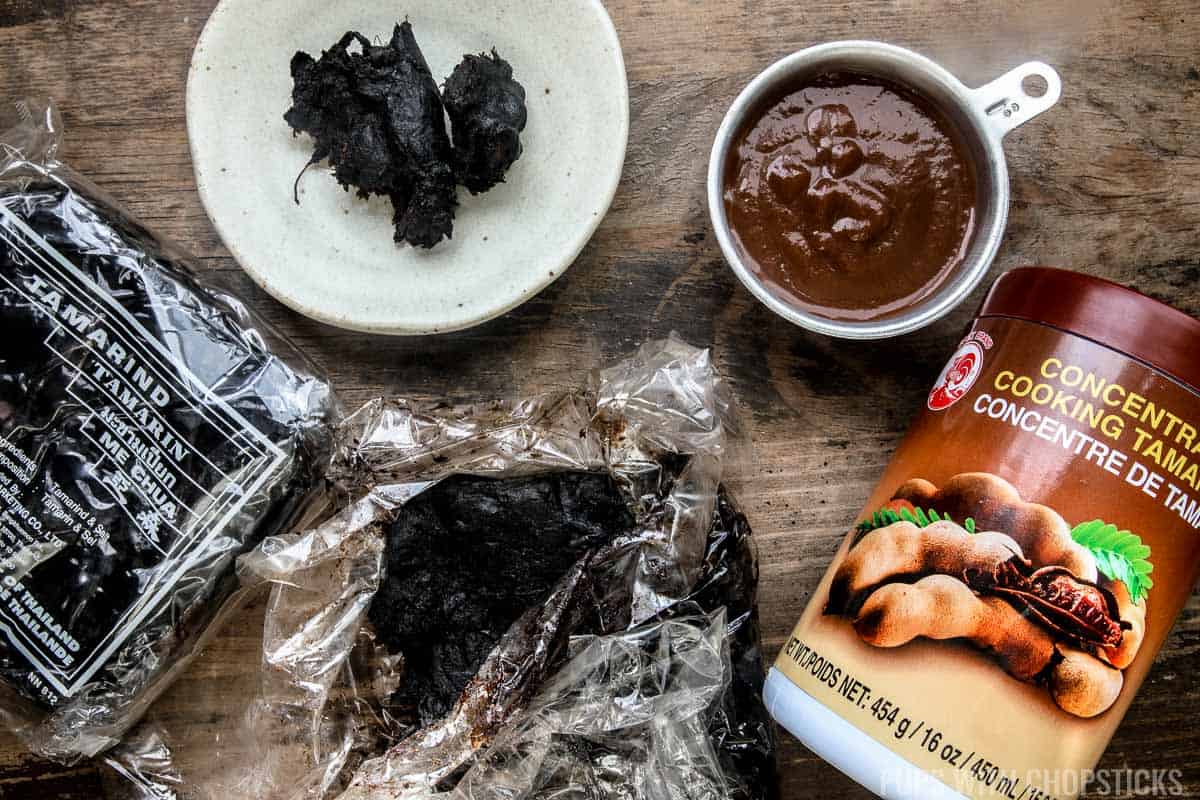
Tamarind is brown pod-like fruit that has a very tart and sour flavor. They are most commonly found in paste form and concentrate form.
Tamarind Paste - Tamarind paste is a very thick and sticky paste made from the whole tamarind fruit so it still contains thick skins, pulp, and seeds. You need to prepare it by soaking it in boiling water (or boiling it in water over the stove) to extract the flavor before you can use it. Once the pulp has been extracted, you need to strain out the seeds and skin.

Tamarind Concentrate - I find it a lot easier to use tamarind concentrates because it is basically tamarind paste that has already been soaked in water for you with the pulp, skin, and seeds removed. This saves you time and there's less mess involved. You just measure it out and use it directly from the jar.
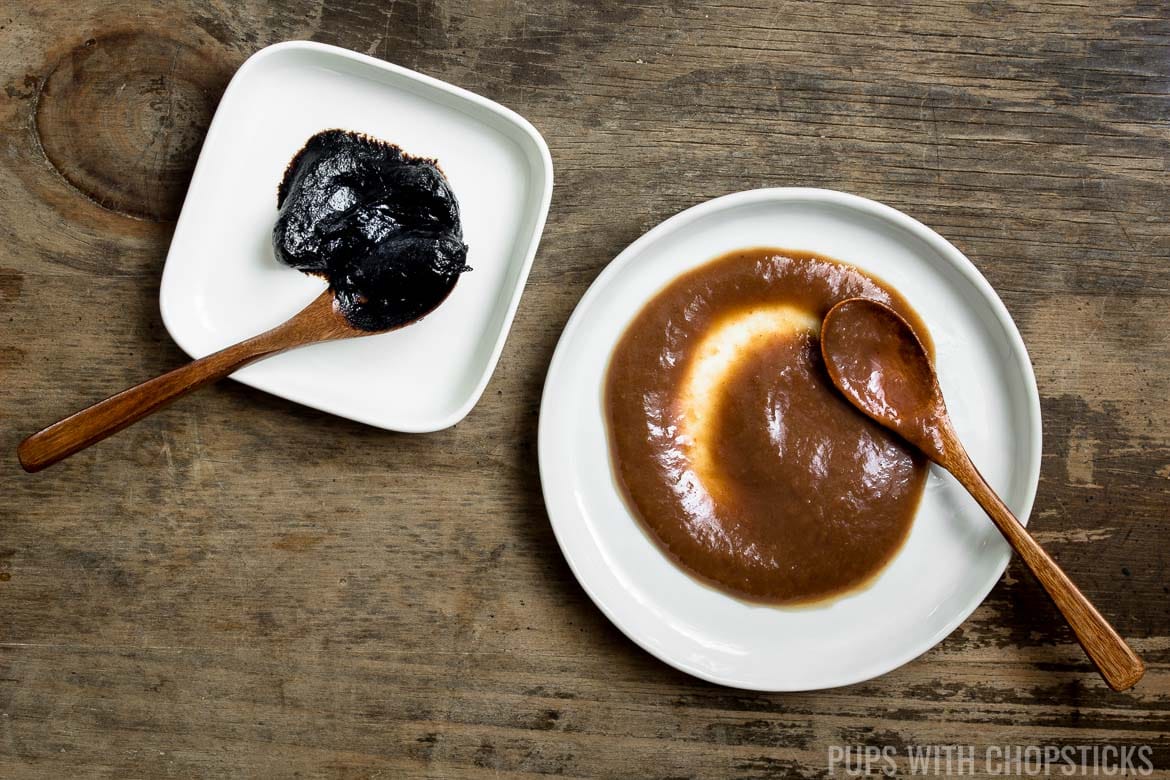
The ratio of using tamarind paste and concentrate is not 1:1 so you will need to use different amounts depending on what form of tamarind you use.
I find the Indian tamarind concentrate (which is usually black in color, like the photo above) much thicker and stronger in flavor, so when you are shopping for it, try to find the Thai version instead which is lighter in color.
Another main difference between the two types of tamarind forms is preservatives. Tamarind concentrates use preservatives, whereas the paste just uses salt to preserve it.
Also, keep in mind, different brands will also have different concentrations and tartness, so put in less than what the recipe card calls for 1 tablespoon at a time and do a taste test in between tablespoons.
Joyce's Tips For the Vietnamese Sweet and Sour Soup
- If you are using tamarind concentrate, different brands will have different concentrations and tartness, so put in less than what the recipe card calls for 1 tablespoon at a time and do a taste test between tablespoons.
- I find the Indian tamarind concentrate (which is usually black in color) much thicker and stronger in flavor, so when you are shopping for tamarind concentrate, try to find the Thai version instead.
- Add the bean sprouts directly to your bowl and let the hot soup slowly wilt and cook it. This retains the crunch and flavor of the bean sprouts.
- If you are using fish for canh chua, pan-fry it first with a bit of garlic and oil to brown it before you fully cook it in the soup. This will keep the fish firmer so that it doesn't break down as easily in the soup when it boils.
- If you are using canned pineapples, buy them in rings and cut them into 1 inch pieces
- You can substitute the chicken for fish or shrimp. If you use fish or shrimp, skip the marinade step.
How to Make Canh Chua
Prepare the Vegetables
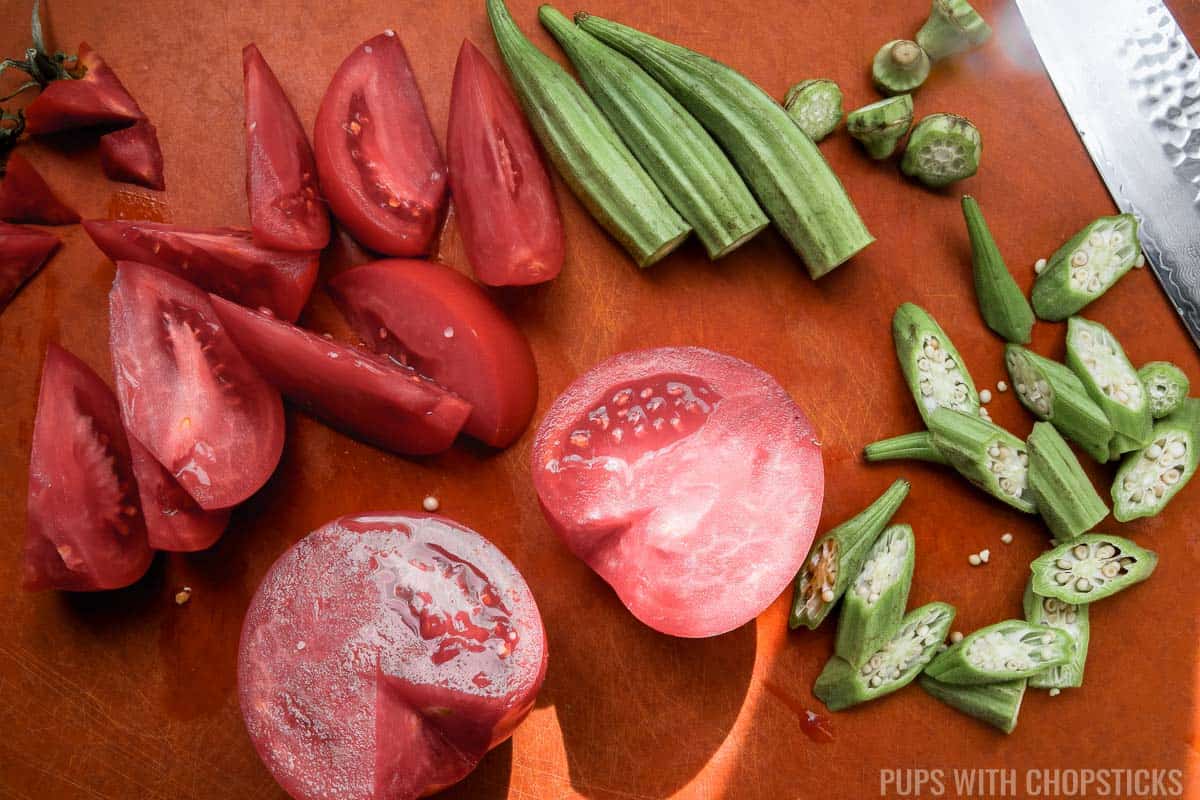
Chop all the vegetables ahead of time by cutting them into bite-sized pieces.
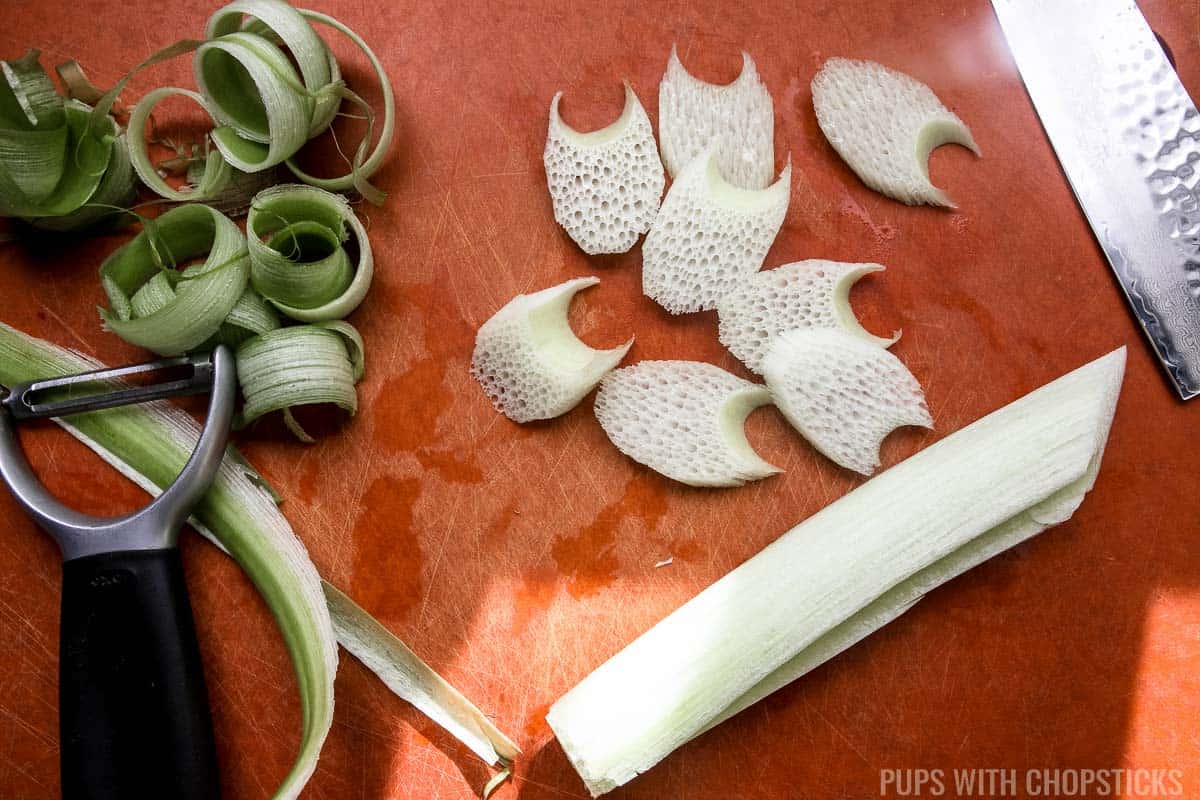
If you are using elephant ears (taro stem) peel the tough skin before slicing it into smaller pieces. I like to cut them into ½-inch to 1-inch pieces.
Marinate the Meat

If you are using fish, you can skip this marinading step, but if you are using chicken I find that marinading and velveting it keeps it moist and tender. I also like to slice the chicken thinly so that it cooks more quickly in the soup.
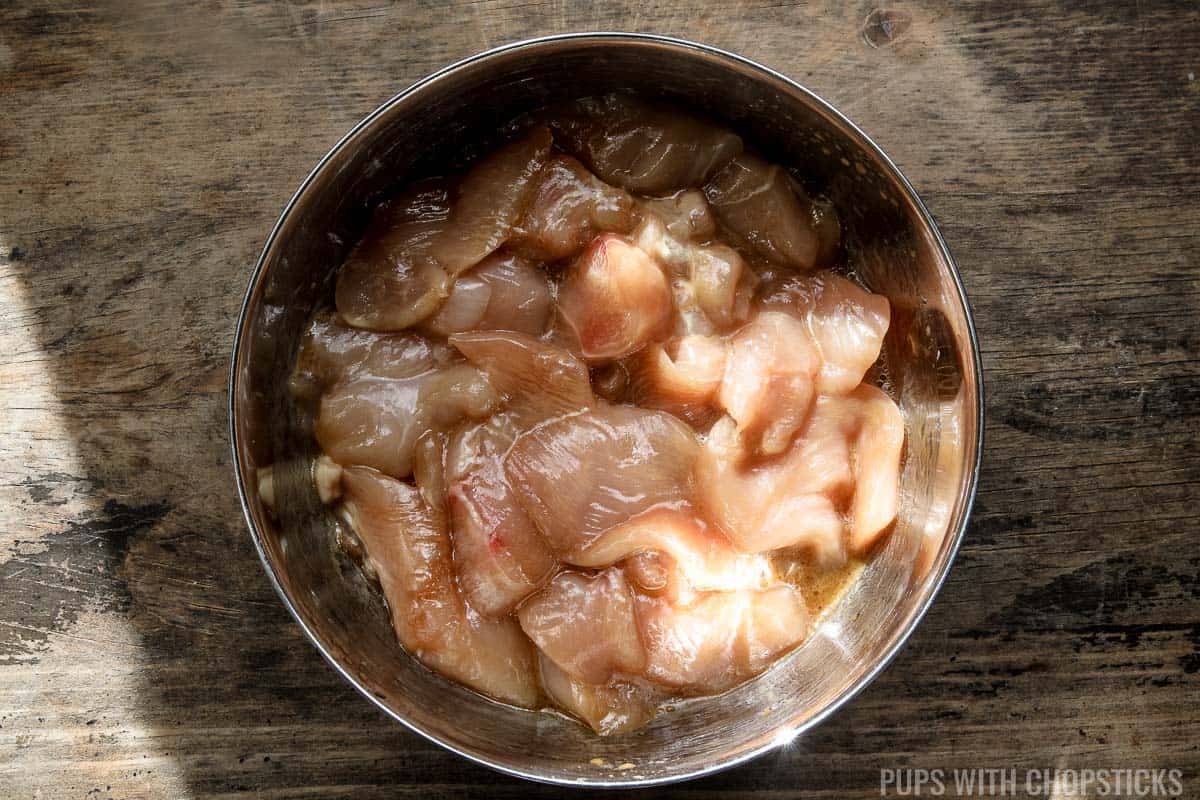
If you are using fish instead, I highly recommend pre-pan frying it in oil with a bit of garlic to give it a bit of flavor. Pan-frying it ahead of time also helps keeps its delicate shape better during the simmering process as well.
Preparing the Tamarind Paste
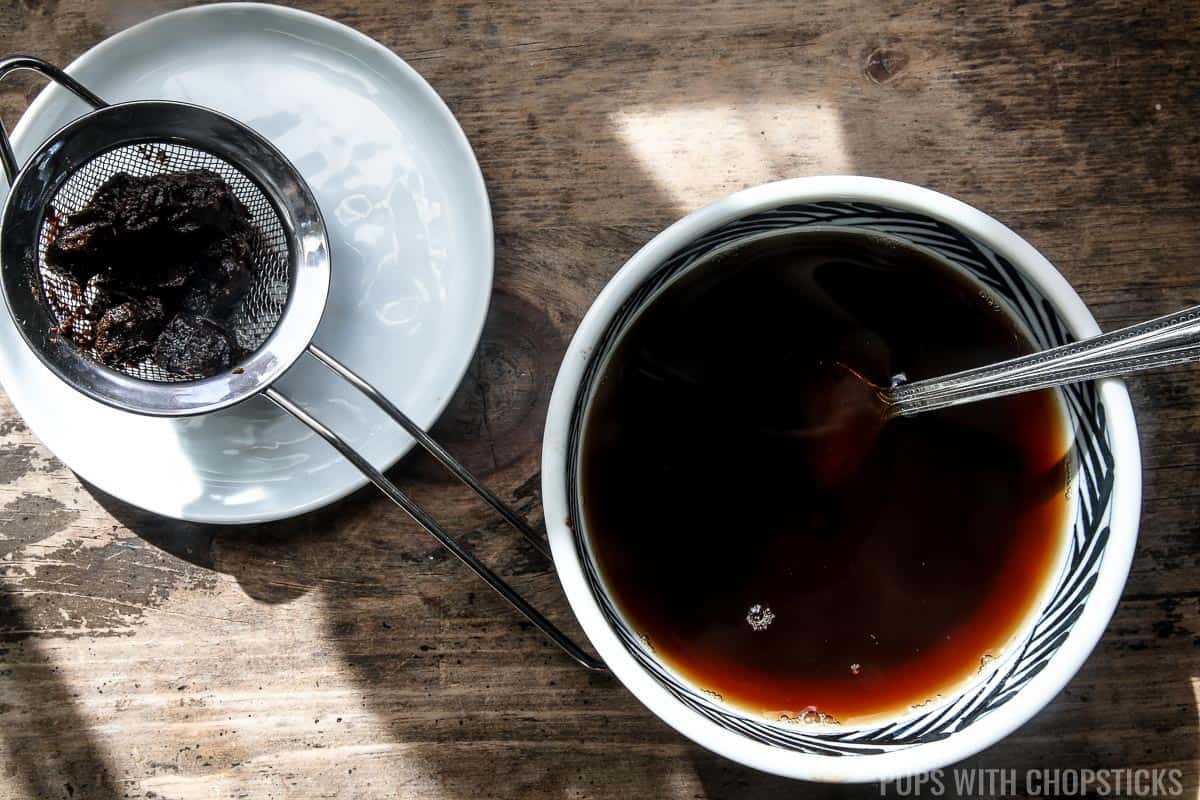
Before you can use tamarind paste, you need to soak it in boiling water for 15 minutes. Alternatively, you can also boil it in a pot with water over a stove, but I find it much easier to just let it soak in boiling water.
Once the tamarind paste is soft, break it up with a fork to infuse as much of the flavor into the water as possible. I will occasionally press the paste down with the fork to extract more flavor.
Once it is done soaking, use a strainer and strain out the seeds and skin. You can press the tamarind through the strainer to extract more of the pulp, make sure you scrape the bottom of the strainer back and put the pulp back into the water.
If you are using tamarind concentrate, you can skip this step.
Put the Soup Together
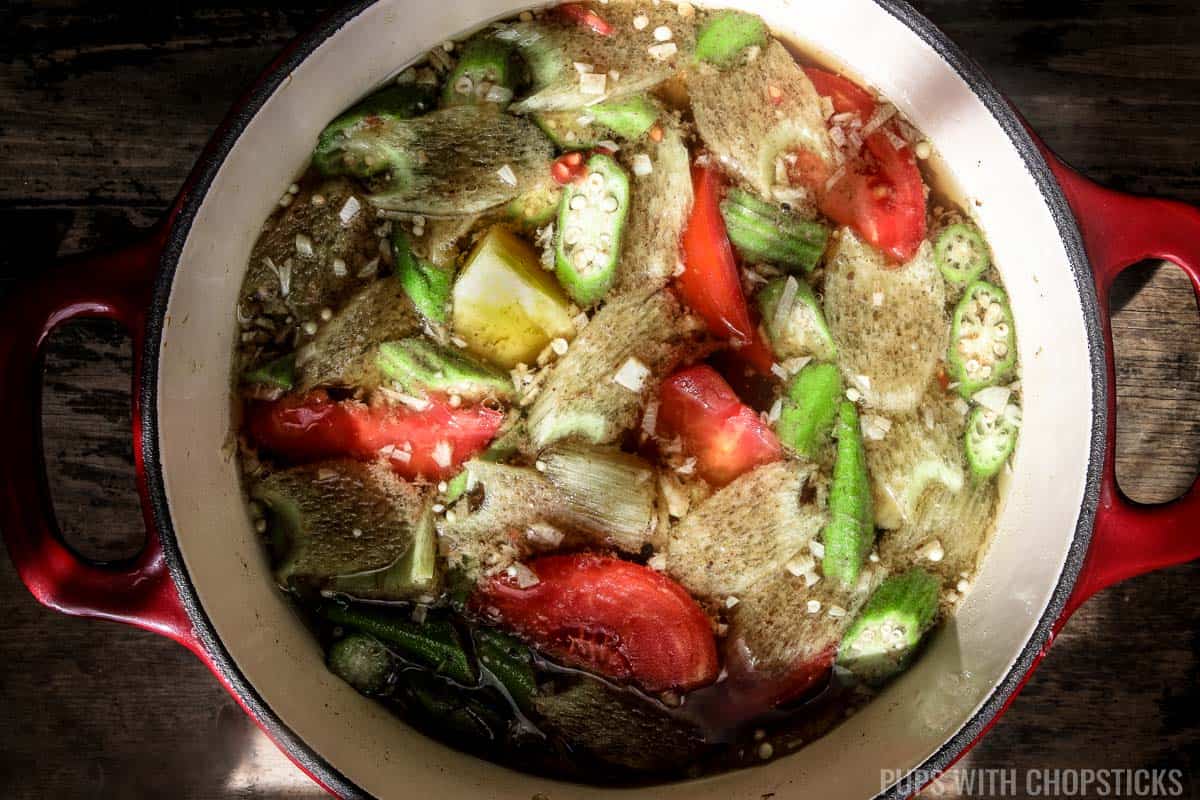
Once you have everything prepared, add some oil to a large pot over medium heat and toast the garlic.
Once the garlic starts to turn a golden color you can remove some of the garlic with the oil and set it aside as a garnish (this is optional).
Now add the broth, tamarind, and pineapple into a large pot and let it simmer for a few minutes.
Next add the okra, marinated chicken, tomatoes, fish sauce and sugar, and elephant ears and cook it for a few more minutes.
The final step is to turn off the heat and add in rice paddy herb, sawtooth cilantro, Thai basil, and bean sprouts and serve immediately.
What to Eat with Canh Chua
Since this soup is so simple and clean, I like to keep it simple and serve it with plain white rice, rice noodles or have it as-is.
How Do You Store It
You can store this in the fridge for up to a week. You can re-heat it over the stove in a pot or you can microwave it as well.
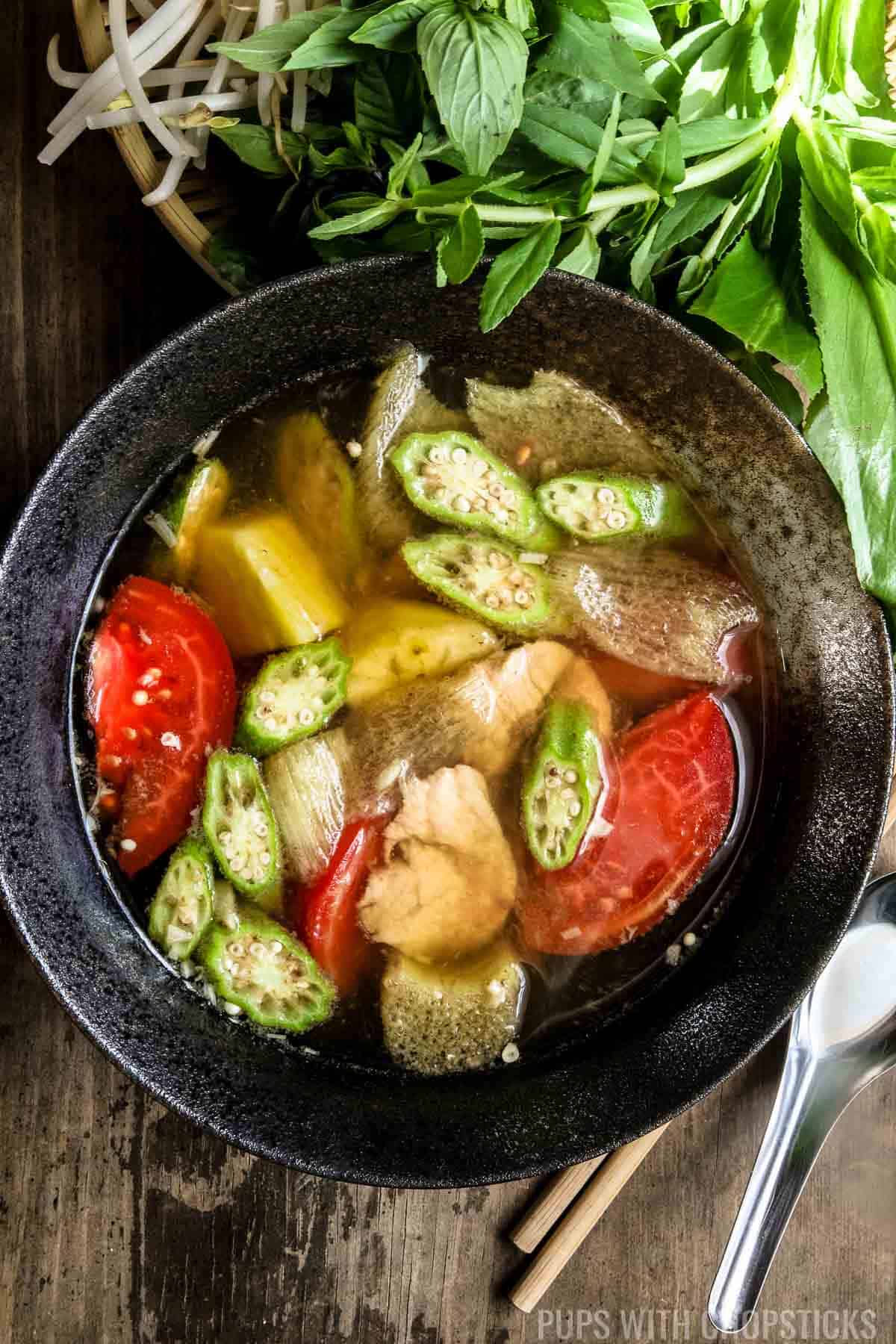
FAQs
It's canh chua (Vietnamese sour soup) made with chicken.
Sinigang and canh chua are both sour soups, sinigang originates from the Philipines and canh chua originates from Vietnam.
The main difference is, sinigang uses pork and canh chua usually uses fish.
Sinigang is also a bit more on the sour side, whereas canh chua has a bit of sugar in it to balance out the sourness so it is not as tart.
This is a very versatile sour soup and it can be made with any type of fish. It is most commonly made with catfish, but you can also use salmon, grouper (for a firmer fish), or even basa filets cut into smaller pieces.
Yes, you definitely can!
If you're vegetarian, you can substitute the chicken with tofu or omit the protein for a more refreshing clear soup.
Instead of using chicken broth, use vegetable broth instead.
More Vietnamese Recipes You May Like
- Bun Bo Hue (Spicy Vietnamese Beef Noodle Soup)
- Bo Kho (Vietnamese Beef Stew)
- Vietnamese Grilled Shrimp Vermicelli Noodle Bowl
- Vietnamese Fish Sauce Dipping Sauce (Nuoc Cham / Nuoc Mam)
- Nem Nuong (Grilled Vietnamese Pork Sausages)
- Vietnamese Grilled Lemongrass Pork Chops (Thit Heo Nuong Xa)
- Vietnamese Lemongrass Chicken
If you like my recipes and tutorials and want to be updated on when new ones come out, please consider subscribing to my newsletter (we don't spam) and follow along on Instagram, Facebook, and Pinterest for all of my latest recipes!
Recipe Card
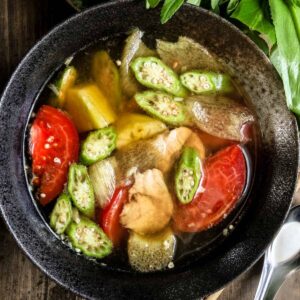
Vietnamese Sweet and Sour Soup (Canh Chua)
Joyce's Recipe Notes
- If you are using canned pineapples, buy them in rings so that you can cut them into large 1 inch pieces. You can also add the pineapple juice from the can directly into the soup as well for some more flavor.
- You can substitute the chicken for fish or shrimp. If you use fish or shrimp, skip the marinade step.
- If you are using fish, pan-fry it in a bit of oil and minced garlic to give it a bit of flavor before fully cooking it in the soup and the fish will hold its shape better while it's boiling in the broth.
- If you can't find rice paddy herb you can omit it and just use Thai basil. If you can't find sawtooth cilantro, you can substitute it with regular cilantro as well.
- If you are using tamarind concentrate, different brands will have different concentrations and tartness, so add the tamarind concentrate 1 tablespoon at a time and do a taste test between tablespoons.
- I find the Indian tamarind concentrate (which is usually black or darker in color) much thicker and stronger in flavor, so when you are shopping for tamarind concentrate, try to find the Thai version instead.
- Try not to overcook the beansprouts. Add it at the very end after you turn off the heat. This retains the crunch and flavor of the bean sprouts.
Ingredients
- 4 cups low sodium broth (chicken, vegetable or seafood)
- 3 tablespoons fish sauce
- 1 tablespoons + 1 ½ teaspoon sugar
- 3 cloves garlic
Tamarind
- 1 cup boiled water
- 60 g tamarind paste (approximately 2 tablespoons. Or 5½ tablespoons of tamarind concentrate)
Chicken Marinade
- 1 chicken breast
- cornstarch
- soy sauce
- sesame oil
Vegetables
- 1 cup pineapple (fresh or canned, cut into 1 inch pieces)
- 1 cup tomatoes (1 small or 1 large tomato, chopped into 1 inch pieces)
- 1 cup okra
- 1 cup elephant ears (taro stem)
Herbs and Garnishes
- 1 handful bean sprouts (approx. 1 cup)
- rice paddy herb (rau om)
- Thai basil
- fried garlic or shallots
- sawtooth coriander
- 1 Thai chili
Instructions
Preparation
- (If you are using tamarind concentrate, you can skip this step.)Add the tamarind paste into a small bowl and pour 1 cup of boiling water over it until it is fully submerged. Use a fork to separate the chunk of tamarind into smaller pieces every few minutes.Soak the tamarind paste for 15 minutes.
- Finely mince the garlic and set it aside.
- Peel the elephant ears and cut them into ½-1 inch pieces diagonally.
- Remove the core of the tomatoes and cut them into wedges and set them aside
- Remove the okra stems and cut them into ½ inch chunks diagonally.
- Cut the pineapple into 1 inch chunks and set them aside.
- Finely chop the rice paddy herb and sawtooth cilantro. If you are using Thai basil, remove the leaves from the stems and discard the stems and finely chop the leaves.Set the herbs aside for later.
- Using a fork, mix the tamarind into the water by smashing it down. Use a strainer to strain out seeds and skins from the tamarind water.Smash the seeds and skins through the strainer to get any last pulp and scrape the bottom of the strainer to collect the rest of the tamarind pulp to add to the water. Set the tamarind water aside for later.
Marinate the Chicken (Skip this step if you are using fish)
- Slice the chicken breast into thin slices (approx ¼ inch thick)
- Marinate it with cornstarch, soy sauce, and cornstarch and set it aside for later
Prepare the Fish (Use these steps if you're using fish)
- Add a bit of oil into a frying pan
- Once the oil is hot, add in half the chopped garlic and the fish and cook it for about 2-3 minutes on each side.
- Turn off the heat and set the fish and garlic oil aside for later.
Making the Canh Chua Soup
- In a large pot, set the stove to medium heat and add the oil and the garlic into the pot. Toast the garlic until it is golden brown.
- (Optional) Once the garlic is golden brown, you can set aside a bit of the garlic and oil as a garnish to add into your soup before you serve it.
- Add the broth, prepared tamarind water (or concentrate), and pineapple to the pot and simmer for 10 minutes.
- Add the okra, tomatoes, elephant ears, and marinated chicken (or fish with its garlic oil) and cook for 2-3 minutes until the chicken has fully cooked.(If you are using thick fish steaks, you will need to add an additional 5 minutes of cooking time since the fish will be thicker than the chicken)
- Add in the fish sauce and sugar and do a taste test. If you like your soup less sour, add in more sugar.
- Turn off the heat and add in the herbs and bean sprouts.
- If you reserved the garlic and garlic oil, add it in right before you serve it.
Nutrition
*Nutritional information is calculated using online tools and is an estimate*
Disclaimer: We are a participant in the Amazon Services LLC Associates Program. As an Amazon Associate, I earn from qualifying purchases at no cost to you - these earnings help keep this blog running. While I appreciate the support – please try to buy your items locally if possible to support your local shops (chances are they are cheaper locally as well!) 🙂

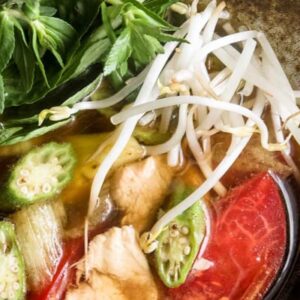

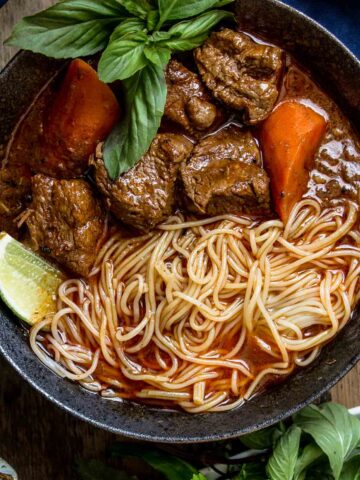
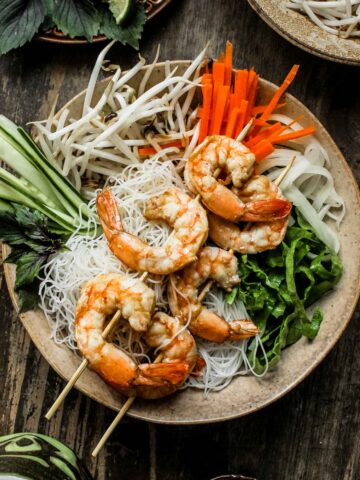
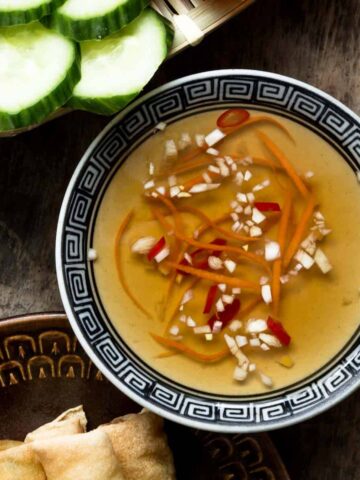

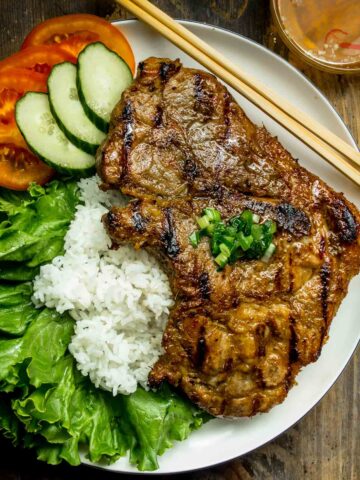

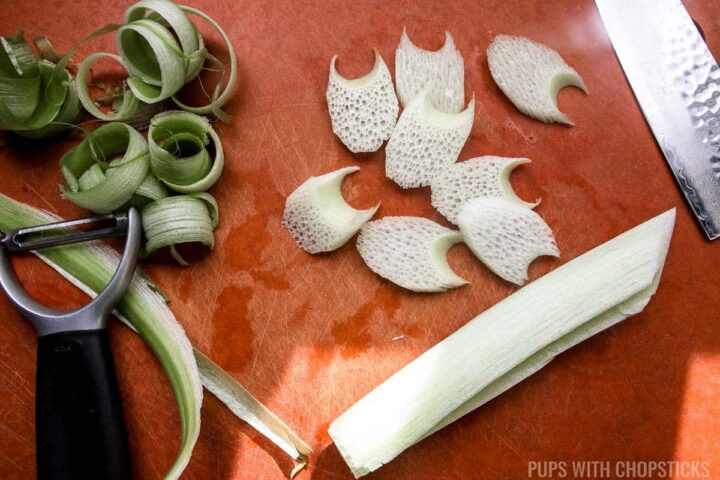
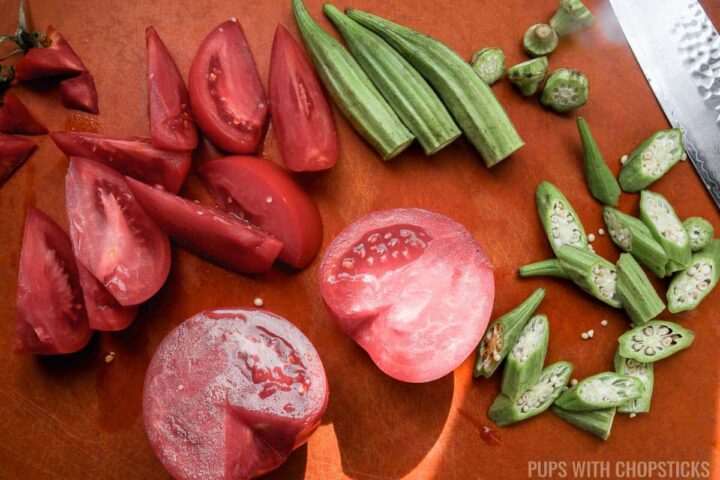
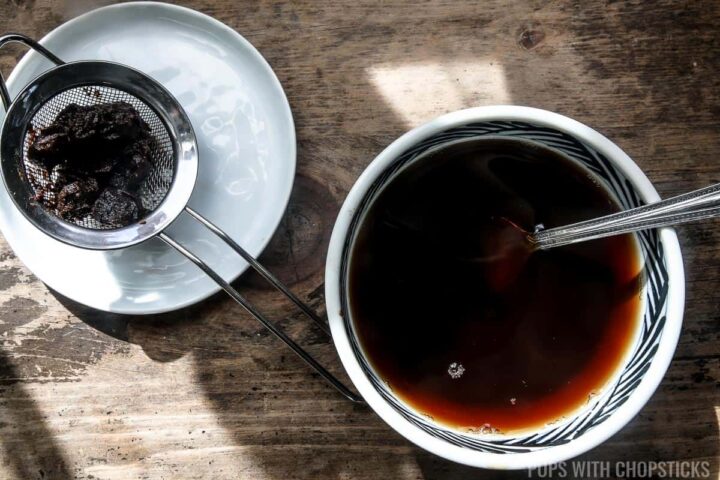

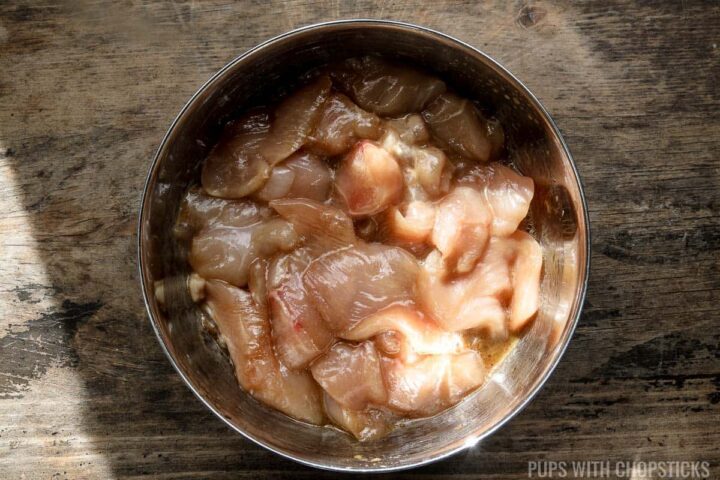
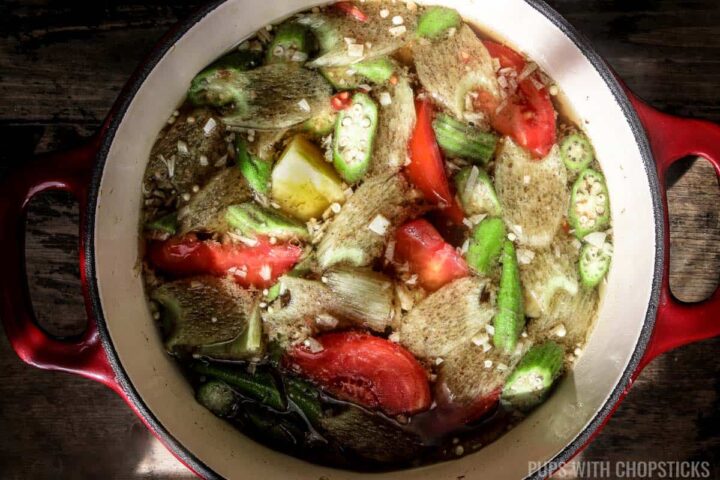
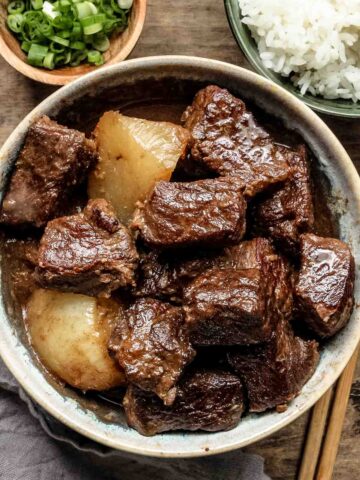
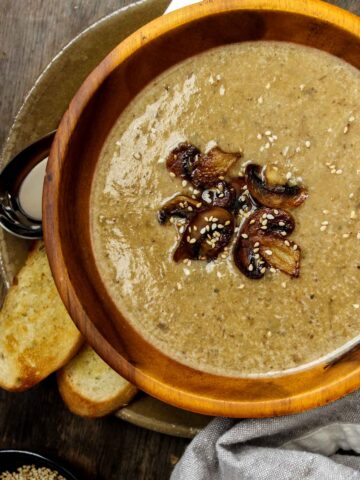
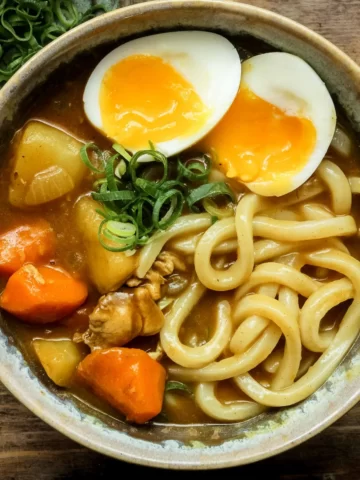
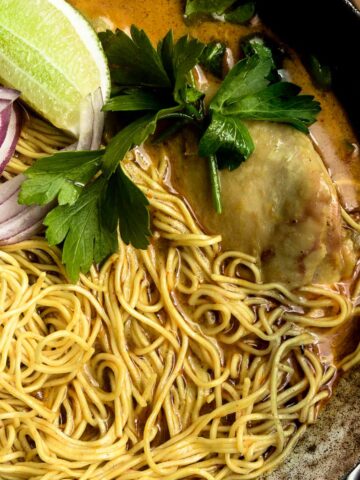
Michelle says
I love all of the fresh ingredients in this soup. Thanks for the tips for tamarind paste.
Joyce Lee says
Hi Michelle!
I'm very happy to share!
Kathleen says
What a hearty and flavor packed soup. I am looking forward to making this for my family.
Joyce Lee says
Hi Kathleen!
Hope they enjoy it!
Dannii says
What a delicious and comforting soup. Such incredible flavours.
Joyce Lee says
Hi Dannii!
Thank you!
Gina Abernathy says
This soup looks very tasty and I'm sure I would enjoy it. I'm saving this recipe to try during the winter when the temps dip down low.
Joyce Lee says
Hi Gina!
This soup is awesome in the winter, but it's also very good in the summer too! It's all the light vegetables! 🙂
Kerri says
This looks so good! I love your tip to marinate the chicken for more flavor! Wil definitely be trying this!
Joyce Lee says
Hi Kerri!
Hope you like it!
Josie says
It is a very healthy and overwhelmingly Vietnamese soup. Very appetizing. 👍
Joyce Lee says
Hi Josie!
I'm so happy you liked it!